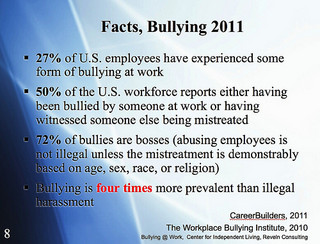|
|
|
Archive for March, 2013
Thursday, March 14th, 2013
Ask an entrepreneur how they are going to move their product and they’ll tell you that they are doing something “really cool” that will “go viral” and sometimes it actually does.
But why?
Why does one cat video garner a million views, while hundreds of others have only a few dozen?
Is there a silver bullet that assures your video will go viral?
Or at least a way to hedge your bets?
No to the first, but yes to the second.
A new book helps; it’s Jonah Berger’s ‘Contagious’: Why Things Catch On and I recommend it to anybody working to be heard through the noise.
Berger talks about six key steps that drive people to talk and share that are listed and explained.
I especially like the story of George Wright, a new marketing hire, who saw the potential in his CEO’s obsessive efforts to break the companies product.
But there’s a great example of a company, Blendtec, that actually made a blender video that’s gotten more than 10 million views…. They have a series of videos called “Will it blend?” — which has over 150 million views — where they stick all types of different things in a blender.
Not bad for what you have to admit is a pretty bland product.
This may be one of those times when the book is actually worth buying.
YouTube credit: KnowledgeAtWharton
Posted in Entrepreneurs, Marketing | 1 Comment »
Wednesday, March 13th, 2013
 How often do you (or your boss) add “or else” or words to that effect when assigning a project or discussing a deadline? How often do you (or your boss) add “or else” or words to that effect when assigning a project or discussing a deadline?
It happens more than you would think.
The threats are rarely direct—Do it or start looking.
More often, they are subtle, unstated—I expect employees who work here to be team players.
Have no doubt, the threat is there: Do X if you want to keep your job.
Anyone who’s ever been on the receiving end of a threat will tell you that they aren’t exactly motivational.
What they are is atrocious management.
Threats are costly not only to the threatEE, who loses confidence and the threatenER, who loses credibility, but also to the organization itself for allowing it to happen.
Far worse is the ripple effect that the sows seeds of a self-propagating culture of intimidation.
Threats kill creativity, innovation, motivation, caring, ownership, in fact, everything that it takes to compete in today’s economy.
Managers who choose to use ultimatums as a motivational tool should not be surprised when employees respond with their feet.
Flickr image credit: James Cridland
Posted in Culture, Motivation, Retention | No Comments »
Tuesday, March 12th, 2013

Yahoo CEO Marissa Mayer started a brouhaha recently when she ended the company’s policy of allowing staff to work from home; many insiders said it was a good move, because remote workers weren’t performing.
However, low productivity and lack of accountability is a management problem, so if she only brings people on-sight without directly dealing with the underlying management problems the results probably won’t improve much.
Hubert Joly, the new Best Buy CEO, dumped the ROWE culture in favor of 40-hour on-site workdays for the headquarters staff as the best way to boost performance in the turnaround; he also wants to sure that everyone knows they are dispensable (himself included).
However, nothing I’ve seen indicates that the work wasn’t getting done, so dumping ROWE may prove of questionable value.
Tony Hsieh thinks on-site is better not because of accountability, but because “companies with strong cultures outperform those without in the long-term financially. So we’re big, big believers in building strong company cultures; note that Zappos’ business lends itself to having all its staff on-site.
Whereas IBM has a strong, unified culture in spite of being a global company with thousands of employees who work off-site.
Bottom line: It’s not a matter of on or off-site; it’s a matter of the strength of the culture, which is dependent on the skill of the management.
Flickr image credit: Gidzy
Posted in Culture, Ducks In A Row, Motivation | No Comments »
Monday, March 11th, 2013
 How do you feel when you see or hear about a boss who bully his people—even if it isn’t your boss? How do you feel when you see or hear about a boss who bully his people—even if it isn’t your boss?
New research shows that the effects are similar whether the bullying is direct or second hand.
I read about the research last month on Dan McCarthy’s Great Leadership blog. He does a great job of summarizing the study, including quotes from it. (The full study must be purchased.)
Like second hand smoke, second hand bullying destroys and even kills—not the body, but the spirit.
“When vicarious abusive supervision is present, employees realize that the organization is allowing this negative treatment to exist, even if they are not experiencing it directly,” the researchers said.
Another recent study documents the long-term damage that affects both the bullied and their tormentors.
“It documents the elevated risk across a wide range of mental health outcomes and over a long period of time,” said Catherine Bradshaw, an expert on bullying and a deputy director of the Center for the Prevention of Youth Violence at Johns Hopkins University, which was not involved in the study. “The experience of bullying in childhood can have profound effects on mental health in adulthood, particularly among youths involved in bullying as both a perpetuator and a victim.”
And running into past bullies, even after 25 years, can cause anxiety and lead to questions about how to act.
I’ve written previously regarding the serious disengagement caused by a bullying culture and about bosses who aren’t role models.
Most managers assume that firing the bully fixes things, but these studies prove that isn’t the case and the termination certainly doesn’t rebuild trust in an organization that allowed it in the first place.
Bullying isn’t always obvious and may even resemble coaching at first glance, so it’s wise to take a second look and occasionally revisit the players just to be sure.
Obviously, it’s best to nip bullying in the bud and doing that takes vigilance—vigilance and the courage to act, whether it’s in your own organization or not.
That’s part of the job description for bosses at every level.
Flickr image credit: Deb Nystrom
Posted in Culture, Motivation, Retention | No Comments »
Friday, March 8th, 2013
A Friday series exploring Startups and the people who make them go. Read all If the Shoe Fits posts here
 Many of the people who start companies are focused on getting rich—period. Many of the people who start companies are focused on getting rich—period.
Entrepreneurship is living a few years of your life as most people won’t so that you can spend the rest of your life like most people can’t. –Anon
But there are many others—more now than ever before and growing—who start companies with a different focus.
They aim to do good by doing well and make the world a better place.
Both would like the tiny bit of immortality that comes with real innovation.
The one thing they all agree on is that whatever it is needs to be done now, because there may not be a ‘later’.
Of course, that goes for everything in life, not just being an entrepreneur.
The most elegant phrasing of ‘why now’ was in a short essay I read recently.
You are older at this moment than you’ve ever been before, and it’s the youngest you’re ever going to get. The mortality rate is holding at a scandalous 100 percent.
That pretty much says it all, so whatever you’ve been “thinking about doing” or “planning” STOP.
Make the future your now and just do it.
Image credit: HikingArtist
Posted in Entrepreneurs, If the Shoe Fits | No Comments »
Thursday, March 7th, 2013
 Interesting comments from Ben Horowitz on why firing a member of the founding team as the company grows may be both a necessary decision and an ethical one. Interesting comments from Ben Horowitz on why firing a member of the founding team as the company grows may be both a necessary decision and an ethical one.
If your current executive team helped you 10X your company, how can you dismiss them when they fall behind in running the behemoth they created? The answer is that your loyalty must go to your employees—the people who report to your executives. Your engineers, marketing people, sales people, finance and HR people who are doing the work. You owe them a world-class management team. That’s the priority.
Can’t argue that and it can happen long before the 10X level is reached.
Horowitz says during each year’s review he would spell out the changes that come with growth.
“Therefore, you will have a new and very different job and I will have to re-evaluate you on that job. If it makes you feel better, that rule goes for everyone on the team including me.”
He goes on to say,
“In giving this kind of direction, it’s important to point out to the executive that when the company doubles in size, she has a new job. This means that doing things that made her successful in her old job will not necessarily translate to success in the new job. In fact, the No. 1 way that executives fail is by continuing to do their old job rather than moving on to their new job.”
What he doesn’t say is that it’s part of the boss’ job to help any employee prepare for those expanded responsibilities;
- First, by providing insight on what improved/new skills and additional knowledge are needed to perform well in the new position, whether or not the title changes.
- Second, by suggesting resources, such as classes, training (if available) and mentoring.
This is as true for executives as it is for any other level.
It’s difficult for people to evaluate their own strengths and weaknesses in a position they know well, let alone in one they haven’t done yet.
This holds true for founders and CEOs, too, assuming they want to hold on to their positions.
However, there is one other question that should be added to the discussion that is some variation of the following, “Now that you understand what will be involved in your new responsibilities is that what you want to do? Do you feel it’s a good fit for who you are and who you want to be; in other words, will it make you happy?”
People are usually happiest in a company of a certain size and at a certain time in its life.
Joining before that or staying after is never a good idea.
Flickr image credit: WalkingGeek
Posted in Entrepreneurs, Motivation | No Comments »
Wednesday, March 6th, 2013

Are you familiar with Eric Ries’ 2008 conception of lean strategy? Its focus was/is startups, but Scott Cook, Intuit cofounder and current chairman of its Executive Committee, believes it applies to any company looking to innovate, large/old as well as small/young.
A major hallmark of lean is the idea of talking to the target market early to get customer feedback in order to create what the market truly wants,
Lean can be applied to anything—product, service, branding strategy, etc.
Why isn’t it? Why do companies, from Fortune 50 to startups still insist on developing [whatever] and being shocked when customers don’t clamor for it?
Scott’s insight, based on his own experience, provides a telling answer.
“Success is a powerful thing, it tends to make companies stupid, and they become less and less innovative.”
Case in point: Ron Johnson, J. C. Penney’s CEO and the ex head of Apple’s retail ops, who was hired to turn Penney’s around.
Based on his success at Apple, part of Johnson’s strategy was to eliminate sales, coupons and promotions in favor of a steady three-tiered pricing approach.
However, Penney’s isn’t Apple and apparently Johnson didn’t check to see if its customers liked that approach.
They didn’t.
(Even the TV ads didn’t makes sense to me. Remember the kid with the hoop and the dog jumping through it? Hmm, maybe customers don’t identify themselves with trained dogs.)
It’s one thing to stick to your brilliant idea in the face of disagreement from experts, but it’s quite another to do so while ignoring customer input.
As Scott said, “For me it was seeing my brilliant ideas—which I just knew were right—not work.”
The take-away here is to get customer feedback, listen to it and tweak [whatever] accordingly.
And before you say you have no customers and walk away, remember that customers aren’t just the folks who buy a product or service; they are also your people, peers, kids, parents, etc.
Flickr image credit: Betsy Weber
Posted in Innovation | 1 Comment »
Tuesday, March 5th, 2013
As I’ve said many times, I really don’t like the whole “leadership thing” as taught by the leadership industry.
But I find those contributing to the March Leadership Development Carnival aren’t preaching that “you are special”/”chosen one” type of leadership.
Instead, they offer up pragmatic advice and help that fosters leadership in everyone, whether they are in a leadership role or not.
 Leadership Practices and Approaches Leadership Practices and Approaches
Mary Jo Asmus of Aspire-CS makes a compelling pitch for being intentional about giving praise and recognition as a daily practice in When things go right. Mary Jo reminds us that “leaders need to look and remark on the things that go right as well as those mistakes made by those around them.”
Dan McCarthy of Great Leadership says, “A lot of leaders make the mistake of using the same conflict management strategy for all kinds of conflict. There are actually three types of conflict, each requiring a different approach.” In How to Handle 3 Kinds of Conflict, Dan shows you how to be more effective next time conflict arises.
In her post 6 Qualities in a Leadership Role Model, Sharlyn Lauby, The HR Bartender, describes six qualities associated with Servant Leadership.
According to Neal Burgis at Practical Solutions Blog, “The old model of leadership was all about having the answers. In the current model, the leader’s primary role is to initiate conversations that bring out the best thinking of the group.” Powerful Conversations that Yield Powerful Results offers tips for holding these conversations.
Gwyn Teatro of You’re Not the Boss of Me says, “A team is made up of people. It is the leader’s job to learn as much as possible about what those people are capable of bringing to it and to encourage their willingness to do so.” Gwyn poignantly describes the consequences of a missed opportunity in A Reflection on Teambuilding… and the Story of Edith.
Wally Bock of Three Star Leadership Blog points out “there should be no surprises at annual performance review time.” In Performance Reviews Made Effective, Wally offers sound advice that will not only make them more effective, but also helpful instead of painful.
In her excellent TEDx talk, The Woman Effect – Video and the Research Behind It, Dana Theus of InPower Consulting Blog examines the modern state of feminine leadership and invites us to show up and participate. She describes the “Tragic Queen” and the “Underdog Princess” and makes a compelling case that ultimately the real difference is in their belief in their own power.
According to Art Petty of Managing Excellence, we live and work in a world filled with chaos and turbulence and must plan and prepare for instability, disruption, and chaos in advance. Art describes 5 Priceless Lessons from Amundsen and Scott and points out, “we will all be better off if we incorporate this explorer’s constancy of purpose and unrelenting focus into our personal and professional endeavors.”
Anna Farmery of The Engaging Brand tells us it’s the little spontaneous gestures that mean so much in What is the Customer Experience.
Bernd Geropp at More Leadership discusses the difference between efficient and effective and your role as a leader. In Why Your Employees Are Not Working Efficiently, he points out it’s not just a simple matter of proper training.
Do KRA’s and Rewards Help in Quality? by Tanmay Vora at QAspire Blog touches upon Alfie Kohn’s work and questions if external reward systems help in tapping the intrinsic motivation of people.
Linda Fisher Thornton of Leading in Context Blog addresses the challenges of complexity. She says, “As our work becomes more complex, so do our ethical dilemmas.” in Complexity in Leadership, Linda discusses the thinking skills to needed to navigate complex situations more easily.
Nick McCormick of The Joe and Wanda on Management Blog asks Are You a Manager or a Host?
The Workplace Environment: Culture, Change, Innovation, and Empowerment
Lolly Daskal of Lead From Within explains that to successfully implement a change effort, “leaders much acknowledge and deal with the emotions of the people who are affected.” Change the Sixth Sense shows us that “change cannot be comprehended without taking into account our feelings.”
John Hunter of Curious Cat Management Improvement Blog points out that “the need in so many organizations to avoid failure means wise actions are avoided because there is a risk of failure.” On the other hand, “reducing the impact of failure is very wise and sensible.” Taking Risks is Necessary, But Costs of Failure Should Still be Managed discusses how to maximize innovation and improvement while minimizing the impact of failure.
Leadership Development – a Key Strategy in Change Management, by Jennifer V. Miller of The People Equation explores how coaching, training and 360 degree feedback is a key strategy for creating an organization that’s responsive to change. As a bonus, Jennifer includes an infographic of a 2013 survey by The Institute for Corporate Productivity that demonstrates how critical of an issue change is for today’s organizations.
In his TEDx talk, Why Great Ideas Get Rejected, David Burkus of LDRLD demonstrates that we possess an inherent bias against innovation in part because we evaluate new ideas through the lens of the status quo. He offers helpful advice on how we can get better at recognizing the value of new ideas when they are presented.
Tanveer Nasser shares Lessons on Effective Leadership From a Nobel Laureate derived from the work of James Watson. Tanveer notes “as innovation continues to evolve into a required cornerstone in today’s organizations, science will certainly play a guiding role in helping leaders to understand how to develop a experimentation mindset within their workforce,” and he stresses the importance of the role of observation.
S. Chris Edmonds of The Purposeful Culture Group asks “how well do your leaders communicate, model, and champion your organization’s desired culture?” in Enable Employees with Liberating Rules.
Chery Gegelman of Simply Understanding by Giana Consulting discusses the importance of organizational culture in The greatest opportunity for improvement and competitive advantage.
Joel Garfinkle of Career Advancement Blog discusses three best practices in recruiting and retaining talent in What’s It Worth to You? — Valuing Human Capital.
Mark Stelzner of Inflexion Point explains that fear is pervasive for all of us and makes the case that an important role of HR is to support employees in facing their fears: On Fear And HR.
Ray Benedetto of Guiding Star Blog describes three anchors of effective leadership systems and provides a checklist to assess your ability to survive the next leadership change in Avoiding Organizational Leadership Crises.
Chris Young at Human Capital Strategies Blog shares 7 Business Lessons from Peter Drucker Every CEO Must Follow.
In Stuck in the Middle, Mary Ila Ward of The Point offers suggestions to C Level executives for empowering middle managers.
Personal Mastery, Communication and Networking
Wendy Appel at The Enneagram Source Blog show us that better decisions will result if our head, heart and gut all have a seat at the table in Integrated Response: Head, Heart, Gut.
Steve Roesler of All Things Workplace offers Tips To Pinpoint Real Issues At Work. If you’ve ever been frustrated by a colleague or a boss who is “talking around an issue,” here are 4 good questions you can ask to help them get focused and right to the heart of the issue.
How do you respond to feedback? Jesse Lyn Stoner describes the peril of ignoring it and provides 4 tips for How to Answer a Wake Up Call. (Hint: Don’t hit the snooze button.)
Julie Winkle Giulioni says “networking is a core competency and requirement for business success.” In Networking Not Working? 6 Strategies for the Intrepid Schmoozer, Julie offers six practical suggestions to increasing your comfort and confidence in networking situations.
In Simple Virtual Touchpoints – A Catalyst for Global Conversations, Susan Mazza of Random Acts of Leadership says, “One of the most valuable outcomes of engaging with people via Social Media has been the opportunity to network with, learn from and build communities with thought leaders from around the world.”
Mark Bennett of TalentedApps explains that to achieve your goals you need a plan that “translates into specific behaviors for your particular situation” in Make sure you know the second shot.
In The Secret Behind the 9 Box Performance Potential Grid, Karin Hurt of Let’s Grow Leaders explains how to take charge of your career. She suggests finding out where you fit in your organization’s succession plan and offers some additional tips.
Miki Saxon of MAPping Company Success explains that stress itself might not be bad, but rather the problem is how you handle it. She says, “If you put your energy into controlling stuff to avoid stress you are bound to fail” in Cope or Control (That is the Question).
Jon Mertz of Thin Difference Blog recently attended the Wisdom 2.0 Conference and shares his learnings in Six New, New Things I Learned from Wisdom 2.0.
Jim Taggart at Changing Winds outlines 9 types of intelligence in Are You Emotionally Intelligent? EI–The Inner Side of Leadership: Part I
In Leadership that Limits Success, Guy Farmer of Self-Awareness Workshops Blog says self-awareness is important so you can choose behaviors that increase success.
Joan Kofodimos of Anyone Can Lead Blog offers some excellent advice on how to Make Sure Your Strengths Don’t Become Weaknesses.
In Saddle Up and Lead Claudio Morelli of The Lead Change Group says,“Overcoming fear is key to a leader’s success in working through difficult situations when their leadership is challenged and sometimes threatened.”
In her post The real ways to capitalize on failure, Robyn McLeod summarizes an Inc. magazine blog post by Lewis Schiff on 5 things to do when you fail.
Randy Conley of Leading with Trust closes out the carnival by providing encouragement to us all by reminding us that we matter in You Matter – The Truth About Your Purpose and Value. A message we all need to remember.
Image credit: Great Leadership
Posted in Business info | No Comments »
Monday, March 4th, 2013
 Two stories today made me really happy. Two stories today made me really happy.
Happy that I won’t be around to see the world that the Silicon Valley mentality is working frantically to make happen. (I say ‘mentality’ because startups are all over as is the mindset described.)
It’s a world of instant solutions, from quasi-immortality, postmortem tweets from soon-to-be-launched LivesOn, to futurist Ayesha Khanna’s idea for smart contact lenses that would make homeless people disappear from view—out of sight/out of mind.
Solutionists err by assuming, rather than investigating, the problems they set out to tackle. Given Silicon Valley’s digital hammers, all problems start looking like nails, and all solutions like apps.
And then there is Seesaw, which allows you to “crowdsource absolutely every decision in your life” and practically guarantees siloed, homogenized attitudes over the long-term.
The drive seems to be to avoid thinking in general, let alone any of the less comfortable deep thinking required to mature and develop anything vaguely resembling wisdom.
Leszek Kolakowski argued that, given that we are regularly confronted with equally valid choices where painful ethical reflection is in order, being inconsistent is the only way to avoid becoming a doctrinaire ideologue who sticks to an algorithm. For Kolakowski, absolute consistency is identical to fanaticism.
Or as Emerson said long before the rise of today’s technology, “A foolish Consistency is the hobgoblins of little minds, adored by little statesmen, philosophers, and divines. With consistency, a great soul simply has nothing to do.”
The main problem with so many innovators is that they want to solve problems with an algorithm, which ignores the entire messy human equation; much like medicine desperately wants to believe that one-dose-fits-all.
Nor, in the rush to innovate, do they give much thought as to the longer-term effects of their miracles.
The interactive dialog provided by digital media was hailed as a way to draw millions more into the dialog, which sounds great until you look at the real effect of negative comments on stories.
Comments from some readers, our research shows, can significantly distort what other readers think was reported in the first place. (…) The results were both surprising and disturbing. Uncivil comments not only polarized readers, but they often changed a participant’s interpretation of the news story itself.
Turns out it’s not so much the comment, but the tone that has the greatest effect.
So. No discussion, no disagreement within your little world, no ethical dilemmas, no deep thinking, mental struggle, stretching or growing.
Maybe no innovation.
Is this the world in which you want to live?
Flickr image credit: Igor Schwarzmann
Posted in Innovation | No Comments »
Friday, March 1st, 2013
A Friday series exploring Startups and the people who make them go. Read all If the Shoe Fits posts here
Infographics are all the rage.
Done well, they present large amounts of information in a fast, graphic manner for today’s visually-addicted populace that can’t be bothered to read text.
VentureBeat provides a great example.
Did you know?
The average angel is 47 years old, makes $90,000 a year, invests in one out of every 10 deals he sees, shovels $37,000 into each deal, and lives in California.
Enough writing? Here is VB’s graphic explanation.

Image credit: HikingArtist
Infographic credit: VentureBeat
Posted in Entrepreneurs, If the Shoe Fits | No Comments »
|
 Subscribe to
Subscribe to
MAPping Company Success
About Miki 
Clarify your exec summary, website, etc.
Have a quick question or just want to chat? Feel free to write or call me at 360.335.8054
The 12 Ingredients of a Fillable Req
CheatSheet for InterviewERS
CheatSheet for InterviewEEs™
Give your mind a rest. Here are 4 quick ways to get rid of kinks, break a logjam or juice your creativity!
Creative mousing
Bubblewrap!
Animal innovation
Brain teaser
The latest disaster is here at home; donate to the East Coast recovery efforts now!
Text REDCROSS to 90999 to make a $10 donation or call 00.733.2767. $10 really really does make a difference and you'll never miss it.
And always donate what you can whenever you can
The following accept cash and in-kind donations: Doctors Without Borders, UNICEF, Red Cross, World Food Program, Save the Children
*/
?>About Miki
About KG
Clarify your exec summary, website, marketing collateral, etc.
Have a question or just want to chat @ no cost? Feel free to write
Download useful assistance now.
Entrepreneurs face difficulties that are hard for most people to imagine, let alone understand. You can find anonymous help and connections that do understand at 7 cups of tea.
Crises never end.
$10 really does make a difference and you’ll never miss it,
while $10 a month has exponential power.
Always donate what you can whenever you can.
The following accept cash and in-kind donations:
|




 How often do you (or your boss) add “or else” or words to that effect when assigning a project or discussing a deadline?
How often do you (or your boss) add “or else” or words to that effect when assigning a project or discussing a deadline?

 Many of the people who start companies are focused on getting rich—period.
Many of the people who start companies are focused on getting rich—period.

 Leadership Practices and Approaches
Leadership Practices and Approaches Two stories today made me really happy.
Two stories today made me really happy.

